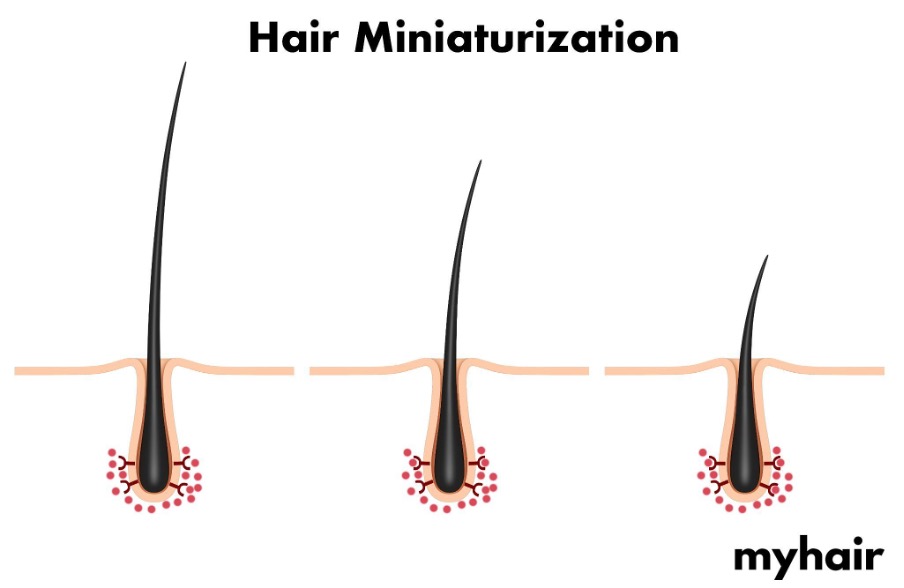There’s a hairstyle trend hitting Hollywood these days, and it’s actually a throwback from the 90s: hair curtains. Hair curtains are achieved by growing your hair out to at least eye level, parting it in the center, and bringing it forward so that it frames both sides of your face.
Have you seen any old movies featuring artists like Leonardo DiCaprio, Brad Pitt, or Johnny Depp when they were young? In the 90s, all of these famous actors sported their own version of the long curtains hairstyle. These days, award-winning actor Timothée Chalamet (Call Me By Your Name, Little Women, The King) is probably the most famous person who tends to sport hair curtains.
Not a fan of the androgynous, floppy curtains style? Maybe you’d rather go for a tousled, voluminous Joe Keery look (that’s Steve, from Stranger Things). Either way, you’ll need to work out how to grow out your hair.
Can men grow their hair out?
Everyone can grow out their hair – but as you’ll likely know, this process can take a while. According to a study in the Dermatologic Clinics journal, hair typically grows at 1 centimeter (0.4 inches) each month. If you’re lucky, this means that your hair is likely to grow about 5 inches (12 centimeters) over the course of a year.
If you’re going from a short hairstyle, like a buzz cut, to eye-length hair curtains, 5 inches may be all you need. However, your exact hair growth rate will vary — scalp health, the nutrients you’re getting from your diet, and other factors can all affect hair growth rate.
How to grow your hair out: a short guide for men
Growing hair out can be an arduous task, if only because it feels like the process takes forever. This process can also take a lot longer if you’re used to getting regular trims, or want to achieve different styles while waiting for your hair to grow. At the end of the day, NOT doing these things is probably the most important part of growing hair out.
Regular trims help hair grow, right?
If you want your hair to grow – and grow fast – stop cutting it! Although you might have heard otherwise, trimming your hair won’t help it grow faster.
That being said, regular trims are good for your hair – they can help get rid of broken hairs and split ends. The catch is that you don’t need to trim your hair every month or two. Just one or two trims over the course of a year can be perfectly fine. Over-trimming is just going to prolong the time it takes for your hair to grow out.
Styling hair while growing it out
If you really want to grow your hair out fast, you should cut down on styling your hair and go au naturel. Do you use a blow dryer? How about a hair straightener? Do you color, bleach, or perm your hair? All of these things can damage your hair and should be avoided while growing it out.
The International Journal of Dermatology published a study that discussed the type of damage that these treatments can have on your hair. For example, the high temperatures of hair straighteners, blow dryers, and curling irons cause bubbles to form inside each strand of hair. Although you can’t see them, these tiny bubbles make your hair fragile and cause it to break. If bubbles form in many hair strands, your hair will become unruly and you’ll likely end up with lots of flyaway hairs.
Heat – and other hair care practices, like chemical treatments, dyeing, and over-brushing – can also lead to fragile, broken hair. However, this can occur in other ways. Rather than forming bubbles, the hair strands can form fractures and start to fray. This results in hair that’s dry and broken at random, different lengths. In particularly bad cases, hair may even stop growing.
Good hair and scalp care make all the difference
Many hair products can dry out your hair, increasing your risk of broken hair and split ends. Although you should minimize your use of hair styling products, this doesn’t mean that you shouldn’t take care of your hair.
Good hair care means keeping both your hair and scalp clean. Washing your hair after you exercise or sweat and using a good cleansing shampoo that can help prevent skin infections and help support hair and skin health.
Make sure to concentrate on the scalp when shampooing and avoid the ends. Oil tends to originate in the scalp, while the ends of your hair tend to be dry.
You should also make sure you wash your hair when it gets oily or dirty. Many people don’t need to wash their hair every day, but the American Academy of Dermatology says that if you have particularly oily hair, you may need to wash it more often than normal. If you have chemically treated hair, you’ll likely want to wash your hair less frequently than average.
It’s important to keep your hair hydrated after cleaning it. Use a conditioner or a 2-in-1 shampoo and conditioner. Some people prefer natural hydration and use coconut oil or argan oil-based moisturizers and hair products. A different study from the Dermatologic Clinics journal says that some of these hair products can even help thicken your hair.
Last but not least, good hair care also means eating a healthy, balanced diet. While it may not seem that obvious, many of the essential vitamins and minerals found in the foods you eat help promote healthy hair growth. Talk to your doctor, dietitian, or nutritionist if you think your diet might be affecting your hair.
Takeaway
If you want to know how to grow your hair out fast, the answer is simple: Keep your hair and scalp healthy. This means making sure that your hair and scalp are clean, hydrated, and well-nourished. It also means avoiding hair dyes and chemical and heat treatments.
If your hair is thin and dry or your scalp is prone to dandruff, and you may struggle to grow out your hair. Consider talking to your dermatologist, trichologist, or hairstylist about ways you can improve your hair and scalp health.





